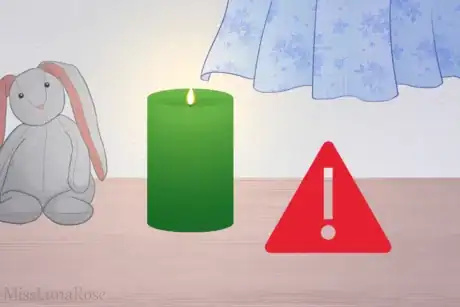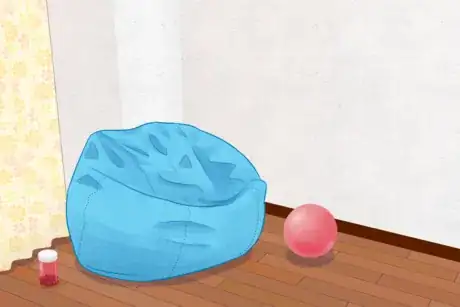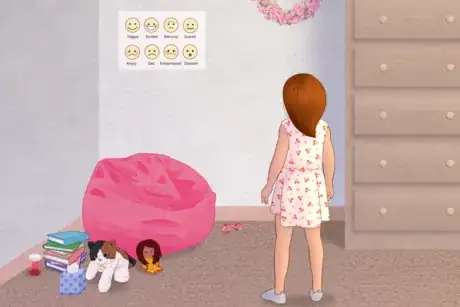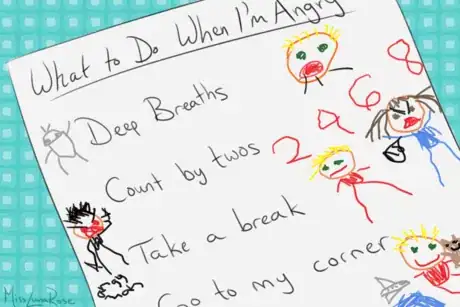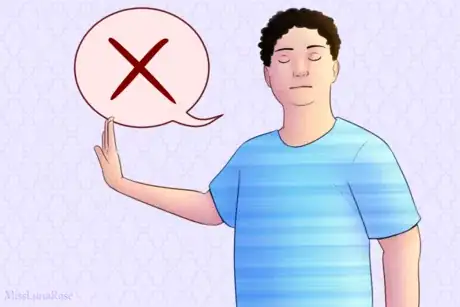This article was written by Luna Rose. Luna Rose is an autistic community member who specializes in writing and autism. She holds a degree in Informatics and has spoken at college events to improve understanding about disabilities. Luna Rose leads wikiHow's Autism Project.
There are 7 references cited in this article, which can be found at the bottom of the page.
wikiHow marks an article as reader-approved once it receives enough positive feedback. In this case, 85% of readers who voted found the article helpful, earning it our reader-approved status.
This article has been viewed 80,643 times.
Remaining calm becomes difficult when people are flooded with emotions or stimuli. Calming down corners provide a safe place to relax and process upsetting feelings and events. They can be a useful tool for people of all ages who deal with strong emotions, especially people with conditions like ADHD, anxiety, PTSD, or autism. Whether the person is neurodivergent or neurotypical, it may be helpful to have a safe place to relax.
Steps
Creating the Corner
-
1Choose a quiet place in the building. Pick a place with minimal noise and activity from people passing through. Barriers (walls, plants, furniture) that block off parts of the room are especially helpful. They will cut down on excess light and possibly sound. You might choose somewhere.[1]
- In a bedroom
- In a closet
- Under a bed
- In a room that isn't used often
-
2Check that the location is safe. This is especially important if you're creating the corner for a child or someone who doesn't fully understand safety. Avoid fire hazards. Skip choking hazards and locks on doors unless the person is knowledgeable enough to use things safely.
- Can the person exit whenever they want without barriers? Could they accidentally end up trapped inside?
- Are flammable objects kept away from heaters, candles, and other possible fire hazards?
- Are curious kids safe from choking hazards and electrical outlets?
- Are weighted blankets light enough that the person can free themselves without help?
- Is there a risk of other people accidentally getting locked out? (For example, if the door locks from inside, a child who plays with the lock might lock out family members and not know how to let them in.)
Advertisement -
3Make the area comfortable. Pillows, blankets, weighted blankets, stuffed animals, beanbag chairs, and soft rugs all make the place feel more relaxing.
-
4Find ways to minimize sensory input. Try a radio with a white noise CD, chairs with large backs to block the view, curtains, and other ways to isolate the corner. [2]
- Some people like to curl up underneath or behind objects. Try creating a makeshift tent, or using furniture in unconventional ways.
-
5Add a few sensory tools. This could involve.[3]
- Audio: a radio or tablet with soothing nature or instrumental music
- Visual: Drawings with the user's favorite color, snow globes, photo albums, blankets/pillows in calming colors
- Tactile: Fidget toys with various textures, and soft stuffed animals or pillows
- Olfactory/Gustatory: Lollipops, hard candies, candles, sweet-smelling lotions or soaps, chewy toys or jewelry
- Proprioceptive:[4] Weighted blankets, beanbags, deep pressure vests, brushes, lotion
-
6Place some basic activities in the corner. This provides something to do while calming down. As you choose activities, think about what usually helps calm or distract the person.
- Books
- Fidget toys
- Puzzles
- Coloring books
- One-person games
-
7Do a test run during a quiet time. Have yourself or your loved one try out the corner for about 15 minutes, and see if has enough activities. Try to imagine what the person might need during a time of stress.
- Remember that when the person using the corner is stressed, they may be too overwhelmed to think of grabbing additional activities. The corner should have enough activities to keep the person from getting bored.
Teach Family Members About the Corner
-
1Explain the basic purpose of the corner. Tell people that the corner is a place for calming down and being alone.[5]
- "When I get sensory overload, I need to be alone, and trying to interact with other people only makes it worse. I made this corner so I can have a place to recover. When I'm in there, please leave me alone."
- "Your sister's corner is a place she can hide when she gets upset. It's her special space. When she goes there, it means she's upset and she needs you to leave her alone. If you want your own corner too, I can help you make one in your room."
- "I created this corner so I have a place to cope when my PTSD is acting up. Taking some quiet time away from other people helps me calm down. Would you please help my siblings understand that I need to be alone when I go there?"
-
2Explain the importance of the person being left alone in the corner. At first, people may not understand the need to be alone, and they may try to interrupt the person to ask questions or make conversation. Emphasize that the person should be left alone if possible.
- "When I'm in the corner, I really need to be alone. Don't interrupt me unless it's urgent. If it's a question like what I want for supper, you can choose for me."
- "I know you want to comfort your brother when he's stressed. But when he uses his corner, it means he needs to be alone. When that happens, the best thing for you to do is to go to a different room and have fun on your own. You can play with him again after he comes out."
-
3Ask them to keep things relatively quiet when the person is in the corner. For example, if the corner is next to the master bedroom, it would be a bad time for someone to start rearranging the bedroom furniture or watch a TV show with the volume up high.
-
4Come up with a plan for corner use. In some cases, the person might simply get up and walk or run to their corner. But it might be good to let other people know what's going on, and children may need to ask for permission depending on your family rules.
- "If you need to use your corner, just tell me or Mom. If you're too overwhelmed to talk, just point to your corner and we'll know what you mean."
- "I'll do my best to tell you that I have to go. If I run off, you can assume I've gone to my corner and that I'll come back when I'm ready."
-
5Emphasize that it's okay to interact once corner time is over. This helps them understand that it isn't personal; the corner is just a place to calm down. There's nothing wrong with talking to the person once they're ready.
- "We can ask him what's wrong once he's done with the corner. For now, I think he wants to be alone."
Teaching Children to Use the Corner
If you have a child who experiences mood swings or acts out, you might find it helpful to put together a calming down corner for them.
-
1Consider having them help you create the corner. The child might want to pick out activities and toys to keep in the corner. If you decide to go shopping for items like beanbag chairs or privacy curtains, try bringing the child so they can pick out their favorite.
- If the child already uses that area as a place to hide, check with them before changing what's in there. Make sure that they approve of any changes you make to their space.
- Tell the child that they're allowed to take things from the corner if they want to use them.
-
2Show the corner to the child. Explain that this corner is a place you put together just for them, and that it is there for them whenever they are feeling overwhelmed or upset. Make it clear that they can go there whenever they want.[6]
- Ask them if they'd like to add things to the corner. The child might have some good ideas. (Also, let them know that they can add and take away their own things from the corner anytime.)
- Let them decorate it with artwork or photos if they'd like.
-
3Accustom your child to the idea of the corner. Depending on the individual child, it may take time for them to understand the concept.[7] Here are some ways to help your child understand:
- Allow your child to explore the corner on their own when they are feeling calm. Keep it open-ended, and let them play with the toys. Leave them alone when they do, so that they don't get confused about whether people will interact with them when they're there.
- Use social stories to demonstrate correct use of the corner.
-
4Ask them if they want to use the corner when you can tell they're stressed. If the child says yes, lead them to it. Once the child is accustomed to the corner, they will usually agree to go if they are upset, or even decide on their own that they need to use it. You could say.[8]
- "Do you want me to comfort you, or do you want some alone time in your corner?"
- "Would you like to take some quiet time in your corner?"
- "You look stressed. Do you need a quick break in your corner?"
-
5Always leave the child alone when they're in their corner. Avoid talking to them or making noise nearby. Leave the room if the child is old enough to be alone, and read a book or magazine on the other side of the room if not. If ambient noise cannot be helped, turn up the white noise in the corner.
- If they start talking to you while they're in the corner, try asking "Are you done with your corner?" This can help them understand that the corner is for alone time, not social time.
-
6Let the child leave the corner when they are ready. Congratulate them on using the corner so calmly, and ask if they are feeling better now. Then talk about any problems that preceded the incident, and resume the day.
Warnings
- Be wary of fire hazards. Don't place flammable papers or blankets near a heater, and candles should be used only under adult supervision.⧼thumbs_response⧽
- Don't locate the corner in a room that gets a lot of traffic, or next to a room that is frequently noisy. This will make it unpleasant to use and much less effective.⧼thumbs_response⧽
- Never use the calming down corner as a punishment for children. They will associate it with feelings of shame or guilt and stop wanting to use it. The corner should always be peaceful and voluntary.⧼thumbs_response⧽
- If you have an autistic child at risk for eloping, it's especially important that you keep the corner a quiet, calm place where they can escape. If it's not peaceful, then they may leave the house in order to try to find somewhere quieter, and they could get lost.⧼thumbs_response⧽
References
- ↑ https://theartofeducation.edu/2019/01/21/how-to-create-a-calm-down-corner-in-5-easy-steps/
- ↑ https://www.sensitivesolutions.org/single-post/2019/07/26/The-5-W%E2%80%99s-of-Calm-Down-Corners
- ↑ https://www.positiveparentingconnection.net/chill-out-corner-a-positivetool-for-learning-emotional-self-regulation/
- ↑ Temple Grandin: Calming Effects of Deep Pressure
- ↑ https://afineparent.com/positive-parenting-faq/calm-down-corner.html
- ↑ https://www.ahaparenting.com/Ages-stages/preschoolers/Life-Preschooler/Calm-Down-Cozy-Corner
- ↑ https://afineparent.com/positive-parenting-faq/calm-down-corner.html
- ↑ https://www.cbc.ca/parents/learning/view/how-to-create-a-calm-down-space-for-your-kids

